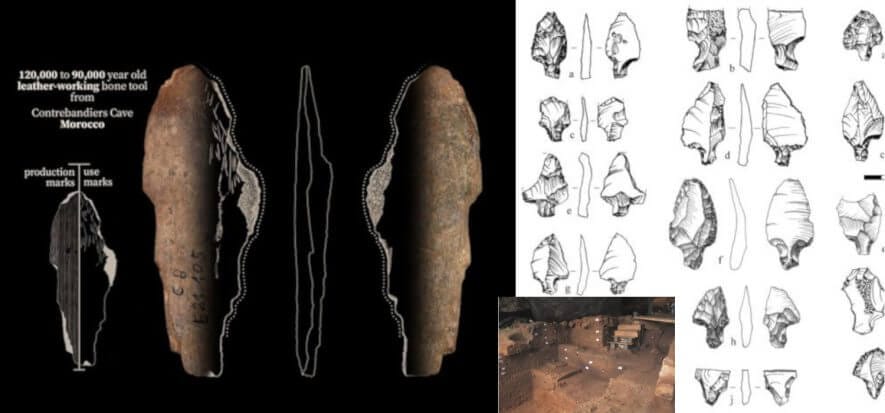Two archeological sites bring the history of tanning to light. After the important discoveries made in Southern France, new findings related to tanning activities have emerged from the excavations of Rome, Italy and Temara, in Marocco. In both cases, archeologists found tools dated over 100,000 years ago.
Two archeological sites
It’s well known that tanning raw hides of animal nature has been an existing practice since the dawn of time. Sometimes though, archeologists manage to bring to light tools and objects that give us more and more details on the clothing worn by ancient populations in all corners of the world. The last site to speak is that of Temara, in Marocco. Here, as reported by ansa.it, researchers from the German Max Planck Institute for the Science of Human History, found a “Contrebandiers” cave containing 62 tools made with bones, utilized to work on hides and fur, as well as a cetacean tooth used for sharpening.
These tools, called lissoirs, are usually obtained from bovine ribs. These tools, explains anthropologist Emily Hallett, “show that homo sapiens began intensifying their use of bones to make precise tools, including those to tan hides, over 120,000 years ago. The versatility of our species is something that characterizes our species and one that emerged before the population expanded into Eurasia”.
The capital’s lissoirs
What surprised experts though was the finding in Rome. As reported by smithsonianmag.com, a team of researchers found a hand-sculpted bone in Castel di Guido. According to the experts, it’s another lissoir. Leading the team is archeologist Paola Villa, curator of the Natural History Museum of the University of Colorado and researcher at the Istituto Italiano di Paleontologia Umana.
The archeologist found the object among other ones dated 400,000 years ago, during the Neanderthal era. The majority of the objects appear to have been made with Palaeoloxodon namadicus bones (elephant with straight tusks that is now extinct), while the lissoir from a bovine bone.
Read also:










